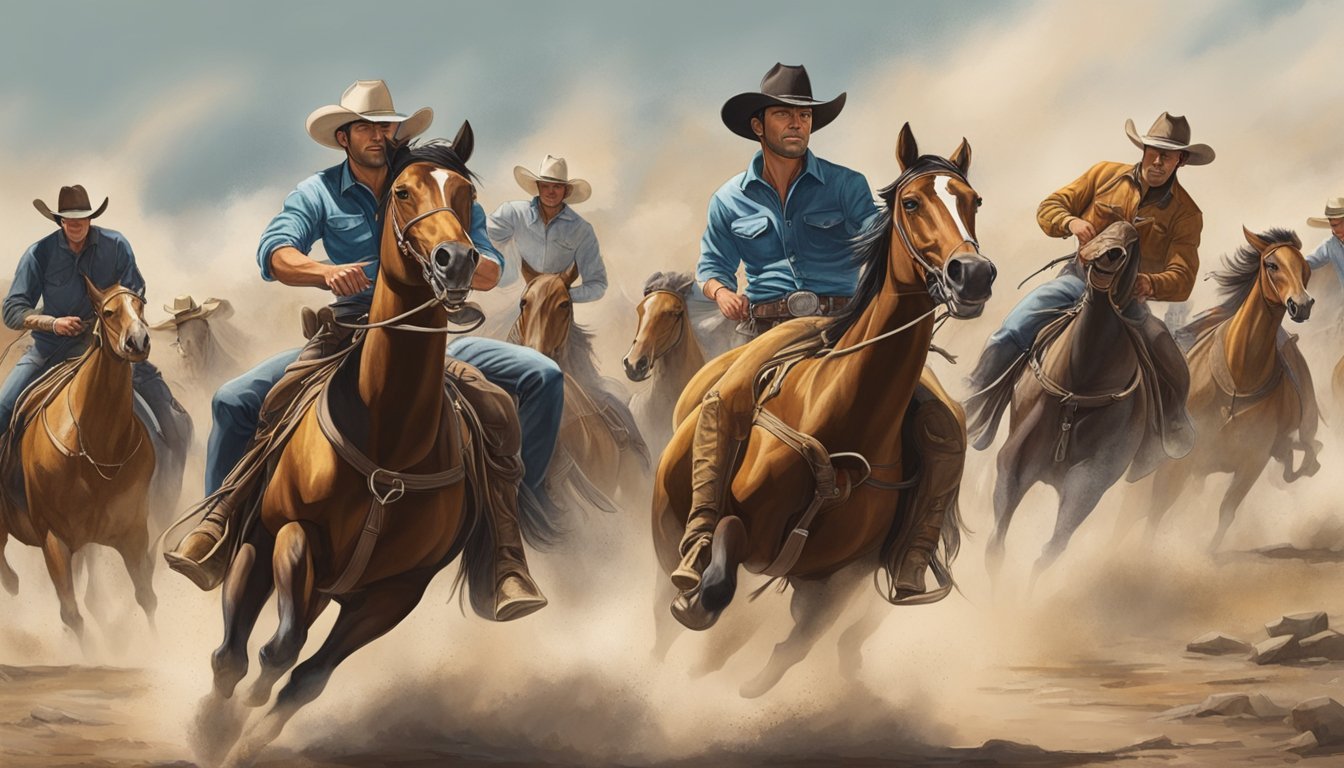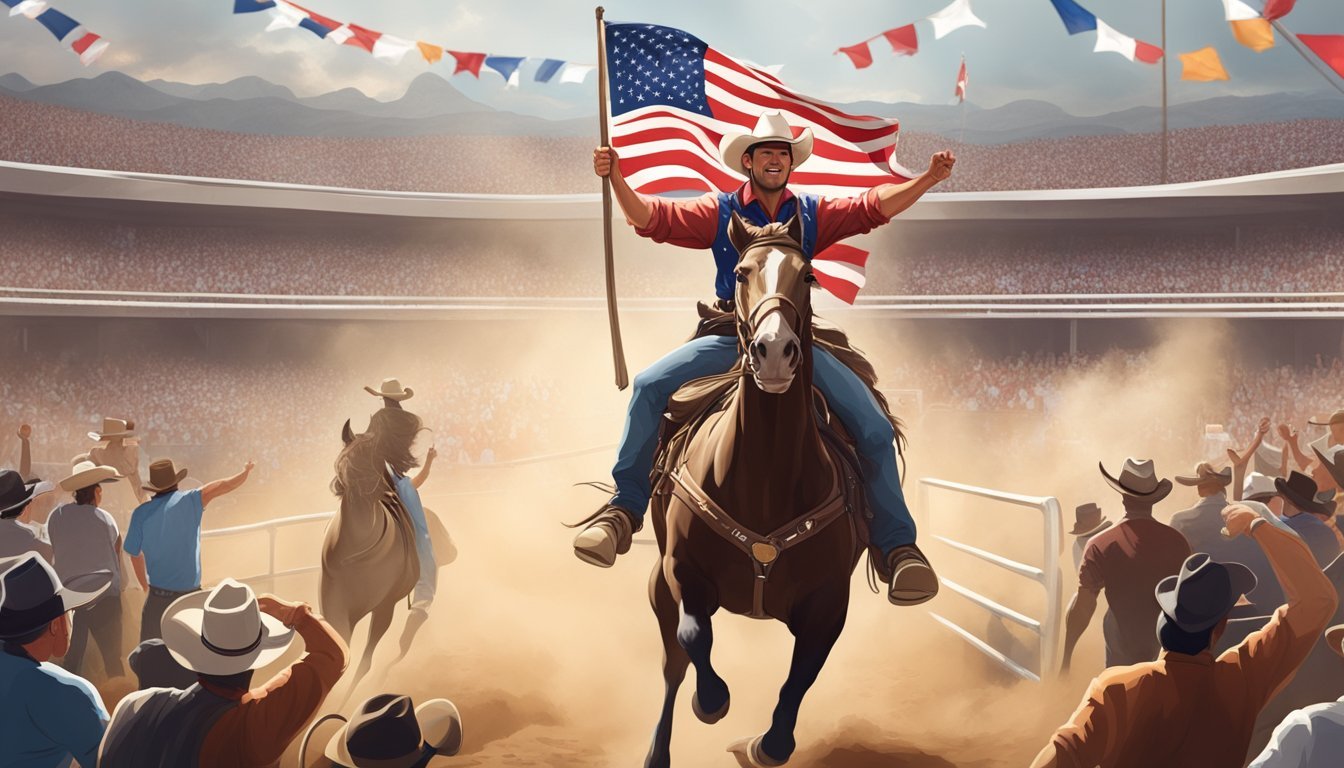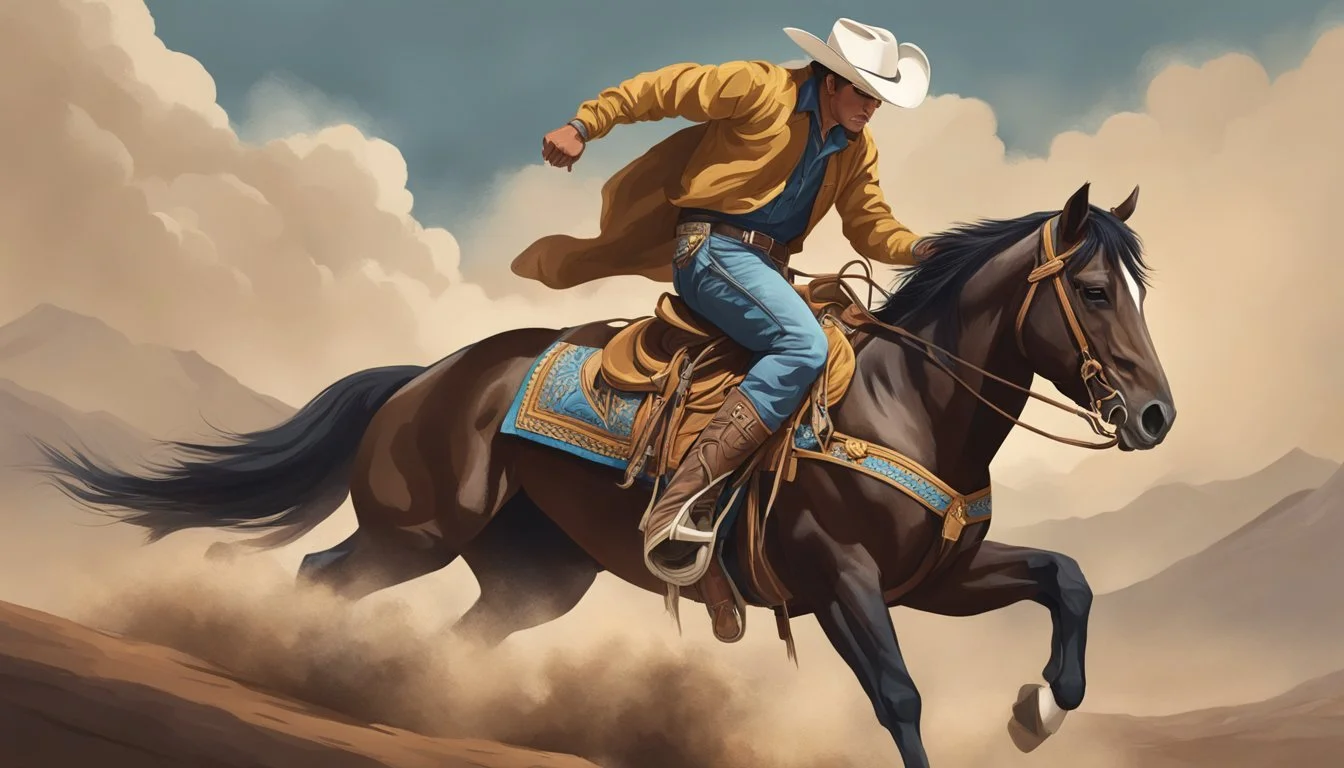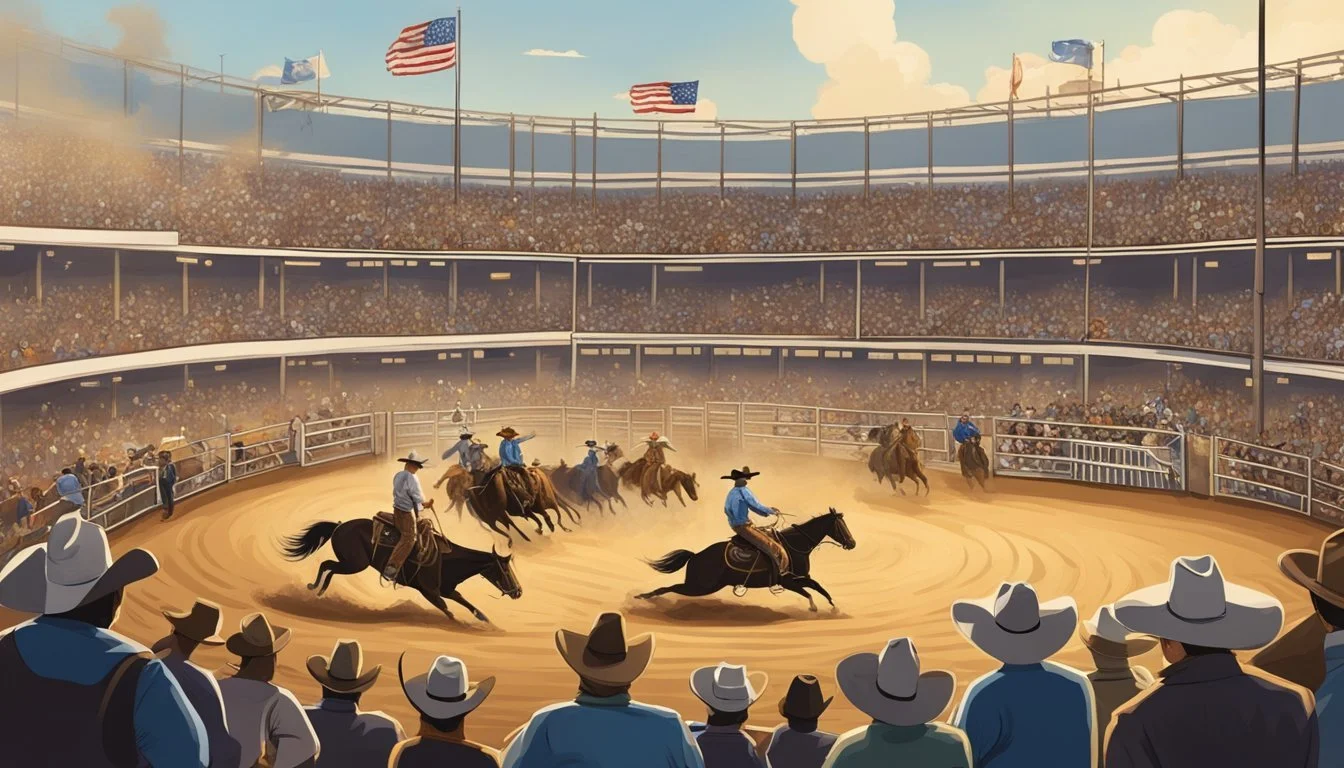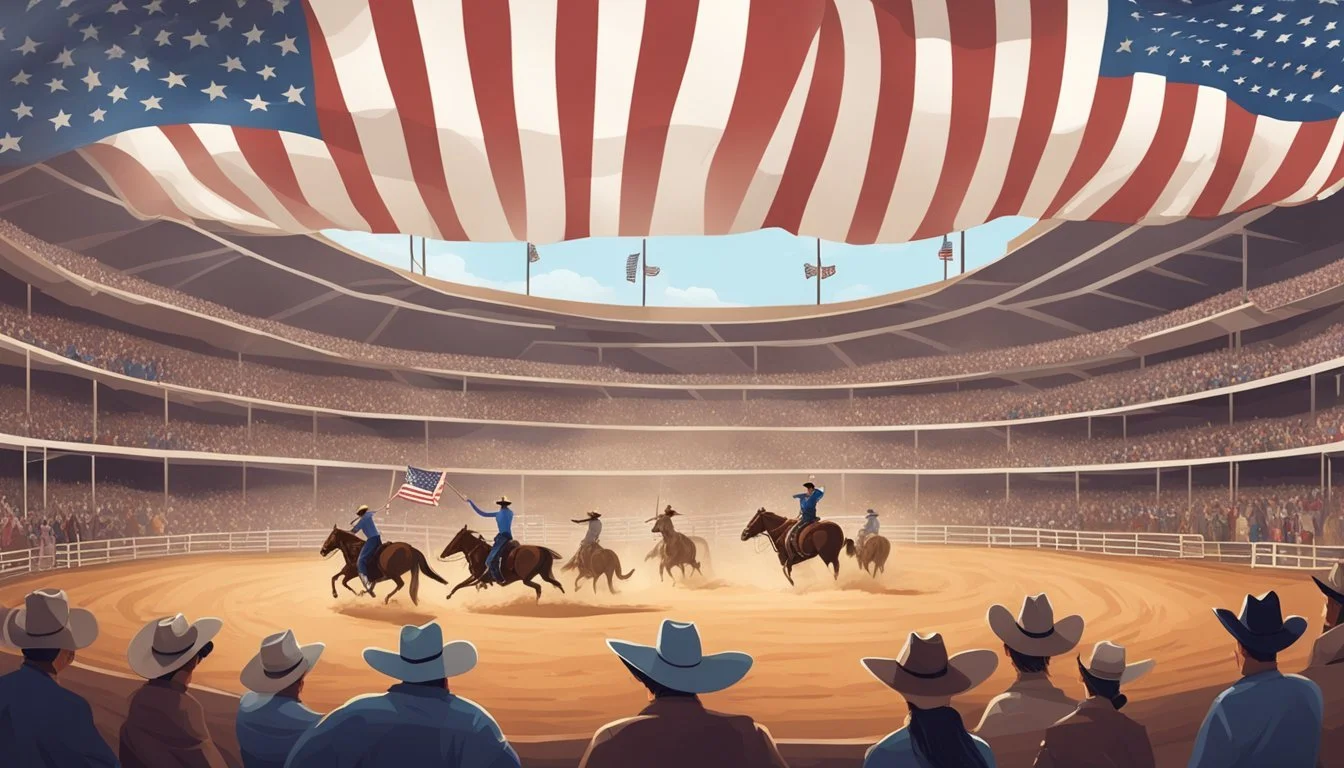Rodeo Revolution: Yellowstone's Thrilling Showdown of Cowboys and Tradition!
Yellowstone, the iconic national park spanning Wyoming and Montana, serves as a living testament to the enduring spirit of the American West. Beyond its breathtaking landscapes, the region surrounding Yellowstone has become synonymous with cowboy culture and the preservation of cherished American traditions.
At the heart of this cultural heritage lies the rodeo, a thrilling spectacle that embodies the skills, values, and resilience of the Old West. Rodeos in Yellowstone Country not only provide entertainment but also play a crucial role in safeguarding the region's cowboy traditions for future generations. These events showcase the time-honored abilities of riders and ropers while fostering a sense of community and shared history.
Yellowstone's rodeo culture reflects the broader evolution of Western traditions in the 21st century. While maintaining its roots in ranching practices, modern rodeos incorporate new technologies and address contemporary challenges. This blend of old and new ensures that the essence of cowboy culture remains relevant and vibrant in today's rapidly changing world.
The Historical Roots of Rodeo Culture
Rodeo culture emerged from the practical skills and traditions of cattle herders in the American West. Its evolution spans centuries, blending influences from Spanish vaqueros, frontier cowboys, and Wild West showmen.
From Spanish Vaqueros to the American Cowboy
Spanish vaqueros introduced cattle ranching to the Americas in the 16th century. Their horse-riding and roping techniques laid the foundation for cowboy skills. As ranching spread northward, these practices merged with Anglo-American traditions.
In the 19th century, American cowboys adapted vaquero methods to suit the vast open ranges. They developed unique riding styles and tools like the lariat. Cattle drives became a cornerstone of the cowboy lifestyle, requiring exceptional horsemanship and roping abilities.
These skills naturally led to friendly competitions among cowboys, forming the basis of early rodeos. Bronc riding, calf roping, and steer wrestling emerged as popular events, reflecting real ranch work.
Impact of 1883 and the Frontier Era
The year 1883 marked a pivotal moment in rodeo history. The first professional rodeo took place in Pecos, Texas, formalizing cowboy competitions. This event coincided with the peak of the American Frontier era.
The 1880s saw rapid westward expansion and the rise of large cattle operations. Cowboys became iconic figures of the American West. Their lifestyle and skills captured public imagination, fueling interest in rodeo events.
Railroad expansion in 1883 also played a crucial role. It facilitated the transport of cattle and enabled traveling rodeo shows. This development helped spread rodeo culture across the country.
Buffalo Bill and the Wild West Shows
William "Buffalo Bill" Cody revolutionized rodeo culture with his Wild West shows. Starting in 1883, these theatrical performances showcased cowboy skills to wide audiences.
Buffalo Bill's shows featured bronc riding, roping, and sharpshooting. They popularized the romanticized image of the American cowboy. Native Americans, cowboys, and other frontier figures performed in elaborate reenactments.
These shows toured nationally and internationally, captivating crowds with their depiction of the Wild West. They helped transform rodeo from a local pastime into a professional sport and entertainment spectacle.
Wild West shows also preserved and promoted cowboy traditions during a time of rapid modernization. They ensured that rodeo skills and cowboy heritage remained relevant in American culture.
The Evolution of Rodeo and Cowboy Culture
Rodeo and cowboy culture have transformed significantly over time, adapting to changing societal norms while preserving core traditions. This evolution reflects the resilience and adaptability of Western heritage.
From Cattle Drives to Cowboy Competitions
Rodeo's roots trace back to 19th-century cattle drives. Cowboys developed skills like roping and riding to manage herds across vast territories. These practical abilities evolved into friendly competitions among ranch hands.
As cattle drives declined, formal rodeo events emerged to showcase and celebrate cowboy skills. The first organized rodeo took place in Prescott, Arizona, in 1888. This marked the transition from working cowboys to professional rodeo athletes.
Rodeos grew in popularity throughout the early 20th century. They became a way to preserve cowboy traditions and provide entertainment for growing urban populations fascinated by the Old West.
Rodeo Events and their Origin Stories
Many rodeo events have direct links to ranch work. Calf roping, for instance, mimics the task of catching and restraining calves for branding or medical treatment.
Bull riding, now a marquee event, began as a test of courage among cowboys. It evolved from informal challenges to a standardized competition with specific rules and scoring systems.
Barrel racing, introduced in the 1930s, allowed women to participate in rodeos. It showcases horsemanship skills essential for quick maneuvering on ranches.
Bronc riding simulates breaking wild horses, a crucial skill for early cowboys. Today, it's divided into saddle bronc and bareback categories, each requiring unique techniques.
Cowboy Lifestyle Through the 21st Century
Modern cowboys blend traditional practices with new technologies. They use GPS, drones, and mobile apps to manage herds and land more efficiently.
Ranching faces challenges from urbanization and climate change. Many ranchers diversify income through tourism, offering dude ranch experiences or guided hunts.
Rodeo culture adapts to changing attitudes. Animal welfare concerns have led to improved veterinary care and safety measures for both animals and athletes.
Television shows like "Yellowstone" introduce cowboy culture to new audiences. They portray ranching life as a complex balance of tradition and modernity.
Rodeos remain popular, with major events drawing large crowds. They continue to evolve, incorporating new events and technologies while honoring their historic roots.
The Cultural Significance of Rodeo in America
Rodeo holds a unique place in American culture, embodying the spirit of the Old West and preserving cherished traditions. It represents core values like resilience, skill, and community that resonate deeply with many Americans.
Rodeo as a Symbol of American Culture
Rodeo exemplifies quintessential American ideals of rugged individualism and frontier spirit. It celebrates the cowboy way of life, showcasing skills honed on ranches across the West. These events draw large crowds, uniting communities through shared cultural experiences.
Rodeo also embodies values like hard work, perseverance, and respect for tradition. Competitors face physical challenges that test their strength and determination. This resonates with audiences who admire these qualities.
In Yellowstone Country, rodeos serve as living museums. They keep cowboy culture alive while connecting younger generations to their heritage.
Preserving Western Tradition and Heritage
Rodeos play a crucial role in maintaining Western traditions. They feature events based on real ranch work, like calf roping and bronc riding. These skills, once essential for daily life, are now preserved as competitive sports.
Rodeo also keeps cowboy craftsmanship alive. Custom-made gear like saddles, chaps, and hats are proudly displayed. Cowboy poetry performances often accompany rodeos, preserving oral storytelling traditions.
Many rodeos incorporate educational elements. They teach spectators about ranching history and the continued importance of agriculture in the West. This helps bridge the gap between urban and rural communities.
Western Genre's Influence: From John Wayne to Taylor Sheridan
The Western genre in film and television has significantly shaped public perceptions of rodeo culture. John Wayne's portrayals of cowboys set a romanticized standard that influenced generations.
Modern creators like Taylor Sheridan continue this tradition. His show "Yellowstone" showcases rodeo as an integral part of ranch life. It presents a nuanced view of modern cowboys balancing tradition with contemporary challenges.
These depictions in popular media have kept rodeo culture relevant. They spark interest in Western heritage among diverse audiences. As a result, rodeos remain vibrant cultural events, even as the American West evolves.
Rodeo Culture in the Yellowstone Region
Rodeo events are deeply woven into the fabric of Yellowstone Country, preserving Western heritage and bringing communities together. These gatherings showcase cowboy skills while providing economic boosts to local areas.
The Significance of Yellowstone's Rodeos
Rodeos in the Yellowstone region are more than just entertainment; they're a living link to the area's frontier past. These events celebrate the skills and values that shaped the American West.
Cody, Wyoming, near Yellowstone's east entrance, has been a rodeo hotspot since 1919. The town's longstanding tradition reflects the deep-rooted cowboy culture in the area.
Rodeos embody core American values like resilience, hard work, and self-reliance. They serve as a bridge between generations, passing down cowboy traditions and skills.
Community Gatherings and Local Economies
Rodeos act as social hubs for rural communities in Yellowstone Country. These events bring people together, fostering a sense of shared identity and pride in Western heritage.
Local businesses benefit from the influx of visitors during rodeo season. Hotels, restaurants, and shops see increased activity, boosting the local economy.
Rodeos also provide opportunities for local talent to shine. Cowboys and cowgirls from nearby ranches can showcase their skills, often competing alongside professional riders.
Big Sky PBR and Cody Stampede
The Big Sky Professional Bull Riders (PBR) event has become a major attraction in recent years. It combines traditional rodeo elements with modern entertainment, drawing large crowds to the Yellowstone area.
Cody Stampede, held annually around July 4th, is one of the region's most prestigious rodeos. It features top-tier competitors and preserves the town's rodeo legacy.
These events blend classic rodeo competitions with family-friendly activities. They offer a mix of thrilling performances and Western cultural experiences for locals and tourists alike.
The Modern American Rodeo
The American rodeo continues to evolve in the 21st century, balancing tradition with contemporary practices. It remains a vibrant showcase of Western skills and values while adapting to changing societal expectations.
Contemporary Rodeo Events and Practices
Modern rodeos feature a mix of classic and newer events. Staples like bull riding, barrel racing, and calf roping endure as crowd favorites. Team roping has gained popularity, highlighting precision and teamwork.
Many rodeos now incorporate youth events to foster the next generation of cowboys and cowgirls. These often include mutton busting for young children and junior versions of adult competitions.
Technology has also found its place in the arena. Electronic scoring systems ensure accuracy, while instant replay assists judges in close calls. Some events use protective gear for both athletes and animals to enhance safety.
Animal Welfare and Sustainable Ranching
Animal welfare has become a central focus in modern rodeos. Veterinarians are now standard fixtures at events, monitoring animal health and stress levels.
Many rodeos have implemented stricter rules on equipment use and handling practices. For example, padded flank straps have replaced traditional leather ones in bucking events.
Sustainable ranching practices are increasingly tied to rodeo culture. Some events showcase environmentally-friendly farming techniques or feature educational exhibits on land conservation.
Rodeo organizers often partner with local ranchers who prioritize sustainable grazing and water management. This connection helps promote responsible stewardship of Western lands.
The Role of Professional Rodeo Cowboys Association
The Professional Rodeo Cowboys Association (PRCA) plays a crucial role in shaping modern rodeo standards. It sets rules for sanctioned events, ensuring consistency across the country.
PRCA oversees the National Finals Rodeo, rodeo's most prestigious annual event. This competition draws top athletes and offers significant prize money, elevating rodeo's professional status.
The association also manages a comprehensive ranking system for competitors. This system helps track performance across multiple events and seasons, adding depth to the sport's competitive landscape.
PRCA works to promote rodeo's cultural significance beyond the arena. It partners with schools and community organizations to educate the public about Western heritage and values.
The Symbolism of Rodeo Apparel and Equipment
Rodeo attire and gear blend function with tradition, expressing Western heritage through carefully crafted items. Each piece tells a story of the American frontier and the enduring cowboy spirit.
Understanding the Significance of Cowboy Attire
Cowboy attire serves both practical and symbolic purposes in rodeo culture. Wide-brimmed hats shield riders from sun and rain while projecting an iconic silhouette. Denim jeans offer durability for rough rides and long days in the saddle.
Bandanas protect against dust and double as makeshift tools. Large belt buckles showcase personal achievements or affiliations. These elements combine to create a distinctive look that connects modern rodeo participants to their pioneering predecessors.
Cowboy boots feature high heels to prevent feet from slipping through stirrups. Their pointed toes make it easier to quickly mount and dismount horses. The boot's shaft protects legs from chafing and thorny vegetation.
The Cultural Legacy of Western Wear
Western wear has transcended its utilitarian origins to become a powerful symbol of American identity. Cowboy hats, in particular, represent rugged individualism and frontier spirit. Different hat styles and creases can indicate regional affiliations or personal preferences.
Rodeo competitors often customize their attire with bright colors or intricate embroidery. These personal touches allow riders to stand out while adhering to traditional forms. Such personalization reflects the balance between individual expression and respect for heritage that defines rodeo culture.
Western wear's influence extends far beyond the arena. Its adoption in fashion and popular culture speaks to the enduring appeal of cowboy mythos in American society.
The Craftsmanship Behind Spurs, Chaps, and Cowboy Boots
Rodeo equipment showcases exceptional craftsmanship, blending artistry with functionality. Spurs, essential for precise communication between rider and horse, often feature intricate engravings or inlaid precious metals. Their jingle bobs produce a distinctive sound that's become synonymous with cowboy culture.
Chaps protect riders' legs from rope burns and thorns. Made from tough leather, they're often adorned with conchos, fringes, or tooled designs. Some chaps feature wool or fleece linings for added warmth in cold weather.
Cowboy boots represent the pinnacle of Western craftsmanship. Skilled artisans hand-stitch leather uppers to durable soles, creating footwear that can last for decades. Exotic materials like alligator or ostrich skin elevate some boots to wearable art pieces.
Rodeo's Impact on Society and the Economy
Rodeos contribute significantly to cultural preservation, economic vitality, and community cohesion in rural areas. They serve as a nexus for celebrating Western heritage while generating revenue and supporting local businesses.
Rodeo's Influence on Community Bonds
Rodeos foster strong community ties by bringing people together for shared experiences. These events often serve as annual gatherings where families and friends reunite. Local businesses and organizations frequently sponsor rodeos, strengthening connections between commerce and culture.
Rodeos also provide opportunities for youth involvement through programs like junior rodeos and 4-H clubs. These activities teach valuable skills and instill a sense of responsibility in younger generations.
Many rodeos incorporate charitable components, raising funds for local causes. This philanthropic aspect further cements the rodeo's role as a community cornerstone.
Economic Pressures and Opportunities within the Rodeo Circuit
The rodeo circuit generates substantial economic activity. Professional cowboys and cowgirls compete for prize money, while support staff, vendors, and service providers benefit from event-related income.
Top-tier rodeos attract thousands of spectators, boosting local economies through increased tourism. Hotels, restaurants, and shops often see a surge in business during rodeo season.
Economic Impact Category Estimated Annual Value Prize Money $30-40 million Spectator Spending $100-150 million Related Tourism $200-300 million
However, smaller rodeos face financial challenges. Rising costs for livestock, insurance, and facilities put pressure on organizers to maintain profitability while keeping ticket prices accessible.
Agritourism and the Preservation of Ranching Lifestyle
Rodeos play a crucial role in agritourism, offering urban dwellers a glimpse into rural life. This exposure helps bridge the gap between urban and rural communities, fostering understanding and appreciation for agricultural traditions.
Many rodeo venues host additional events like farm tours, petting zoos, and educational programs. These activities provide supplementary income for ranchers and help preserve traditional agricultural practices.
Rodeos also serve as a platform for promoting sustainable ranching methods and animal welfare practices. This education helps ensure the continued viability of the ranching lifestyle in modern society.
Character and Ideals of Rodeo Culture
Rodeo culture embodies timeless values that shape the character of participants and spectators alike. These ideals reflect the spirit of the American West and continue to inspire communities across the country.
Rodeo Ethics and the Cowboy Spirit
Rodeo participants adhere to a code of ethics rooted in the cowboy way of life. This includes respect for animals, fair competition, and personal integrity. The cowboy spirit emphasizes hard work, honesty, and self-reliance. Competitors often follow the "Cowboy Code of Ethics," which includes principles like keeping one's word and finishing what they start.
Rodeo athletes demonstrate remarkable courage in facing dangerous situations. They exhibit a deep connection with their animals, treating them as partners rather than tools. This bond is evident in events like bronc riding and team roping.
Rugged Individualism and Competitive Spirit
Rodeo culture celebrates rugged individualism. Competitors face challenges alone, relying on their skills and determination. This self-reliance is a cornerstone of the cowboy ethos.
The competitive spirit in rodeos is fierce but respectful. Athletes strive to outperform each other while acknowledging the achievements of their peers. Rodeo events test physical strength, mental toughness, and split-second decision-making.
Participants often come from ranching backgrounds, bringing authentic skills to the arena. Their competitive drive is balanced with a strong sense of sportsmanship and mutual respect.
Rodeo as a Unifying Force: Camaraderie and Resilience
Rodeos foster a strong sense of community among participants and spectators. Competitors form close bonds, supporting each other through triumphs and setbacks. This camaraderie extends beyond the arena, creating lifelong friendships.
Resilience is a defining characteristic of rodeo culture. Athletes face physical injuries and emotional challenges, but they persevere. The rodeo community rallies around injured competitors, offering support and encouragement.
Rodeos bring together people from diverse backgrounds, uniting them through shared appreciation for Western traditions. These events serve as social gatherings, strengthening community ties and preserving cultural heritage.
Challenges and Future Directions for Rodeo Culture
Rodeo culture faces several key challenges as it adapts to the modern world. These include balancing environmental concerns, integrating new technologies, and maintaining relevance in contemporary society.
Environmental Concerns and Land Management
Rodeo events often take place on large swaths of land, raising questions about sustainable land use. Overgrazing and soil erosion are potential issues that require careful management. Some ranches have implemented rotational grazing systems to mitigate these effects.
Water conservation is another critical concern. Many rodeo facilities are exploring efficient irrigation methods and drought-resistant landscaping to reduce water consumption.
Land disputes between ranchers and conservationists have become more frequent. Rodeo organizers are increasingly collaborating with environmental groups to find common ground and develop sustainable practices.
Adapting to Modern Technology: GPS Tracking and More
GPS tracking technology is revolutionizing cattle management in rodeo culture. Ranchers can now monitor herd movements and health remotely, improving efficiency and animal welfare.
Virtual reality (VR) is being used to train riders and enhance spectator experiences. Some rodeos offer VR simulations that allow fans to experience events from a rider's perspective.
Drone technology assists in land surveying and event coverage. Aerial footage provides new angles for broadcasts and helps in assessing rangeland conditions.
Rodeo's Place in Future American Society
Rodeo culture is evolving to reflect changing societal values. Animal welfare concerns have led to stricter regulations and improved veterinary care at events.
Efforts to diversify participation are underway. Programs encouraging women and minorities in rodeo aim to broaden its appeal and preserve the frontier spirit for future generations.
Urban rodeo events are gaining popularity, bringing Western traditions to city dwellers. These events often incorporate educational components about ranching history and sustainable agriculture.
Rodeo schools and youth programs focus on passing down skills and values to younger generations, ensuring the continuity of this American tradition in the 21st century.

